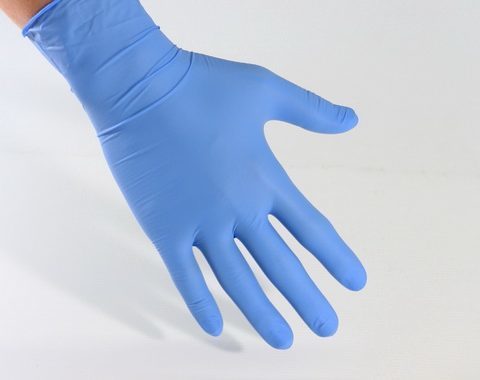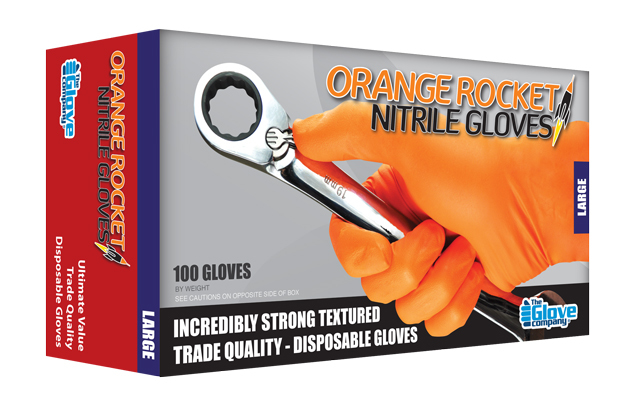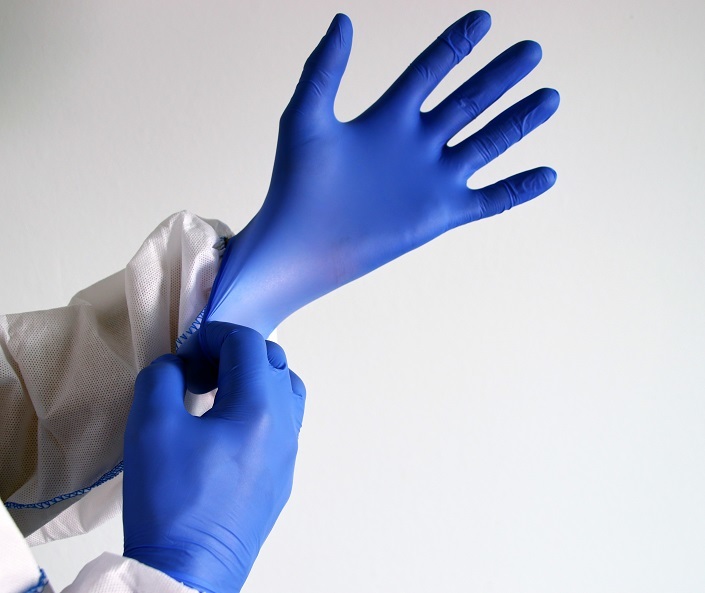Which disposable gloves?
Disposable gloves: latex, nitrile, vinyl
What are vinyl gloves used for? What are the brightly coloured gloves all about? What is the powder in latex gloves? Should latex gloves be worn when handling chemicals? Can I have an allergic reaction to latex gloves? What are nitrile gloves? Is latex biodegradable? Which gloves are best for food preparation or cleaning? To talk to us about how we can help out with disposable gloves, please call 0508 467 462 or you can email us at any time.
Effective PPE
When it comes to hygiene and care, disposable gloves are a crucial part of personal protective equipment (PPE). They protect from exposure to potentially dangerous microbes, chemicals and compounds from health care to dishwashing at home. None of that would come as a surprise, but what might not be so evident is that disposable gloves aren’t all created equal: nitrile, latex, and vinyl offer different levels of protection, comfort and durability.
It all depends on the task at hand
When choosing disposable gloves, the main issue to consider is the appropriacy for the task at hand, so in this article, we’ll look at what makes gloves different from each other and their advantages and disadvantages.
Latex gloves
For decades, latex gloves have been the rockstar of the disposable glove world thanks to their elasticity, flexibility, protection, and comfort. Being soft and stretchy, latex gives a proper fit to any palm shape and size.
 Resistant to puncturing, and with the ability for small punctures to self-seal, these gloves serve as an optimal barrier against biological contaminants. They have good resistance to many chemicals, but do not provide protection against petroleum-based products.
Resistant to puncturing, and with the ability for small punctures to self-seal, these gloves serve as an optimal barrier against biological contaminants. They have good resistance to many chemicals, but do not provide protection against petroleum-based products.
Latex is a natural rubber material sourced from tree sap. During manufacturing, latex is heated and chemicals, such as sulphur, are added to render the latex elastic. This process is known as vulcanisation. Additional chemicals, commonly known as accelerators, are added for strength and durability. A dry powder lubricant (usually corn starch) is added to the surface of the latex to prevent the rubber surfaces from sticking together.
However, many people can have allergic reactions to the latex proteins found in the glove. This has led to more demand for latex-free disposable glove alternatives, like nitrile and vinyl.
Advantages of latex gloves:
- High level of touch sensitivity
- Flexible
- Good for use over extended periods
- Good for use involving infectious materials
- Cost-effective
- Lightly powdered option makes them easy to put on
- Very elastic and strong
- Biodegradable, but take many years to break down
Disadvantages of latex gloves:
- Not suitable for people with latex allergies
- No protection against petroleum-based products
Vinyl gloves
 Disposable vinyl gloves are inexpensive: they are the cheapest latex-free glove option.
Disposable vinyl gloves are inexpensive: they are the cheapest latex-free glove option.
Vinyl is made from PVC, a non-biodegradable petroleum-based film. Vinyl gloves are a cheap alternative and were the first offering as an allergy-free option to latex. However, they offer little protection from chemicals and micro-organisms because when vinyl gloves are stretched or flexed, the individual molecules separate, and the integrity of the protective barrier is compromised. They are highly susceptible to tears and punctures. They also do not offer the dexterity of nitrile and latex gloves: their loose fit can also lead to muscle fatigue.
Due to their affordability and protection against the short-term handling of non-hazardous materials and chemicals in low-infection environments, vinyl gloves are ideal for housekeeping, and food preparation.
Advantages of vinyl gloves:
- Latex-free making them great for people with latex allergies
- Good for short-term, low-risk tasks
- Inexpensive
- Lightly powdered options mean they are easier to get on and off
- They have a longer shelf life than latex gloves which can start to break down over time
Disadvantages of vinyl gloves
- Not biodegradable
- Not form fitting
- Little to no protection against chemicals and biohazards
Nitrile gloves
Nitrile gloves were first developed to solve the problems of allergic reactions to latex gloves and low protection against solvents. Nitrile is a man-made rubber that provides users with good tactile sensitivity, allowing wearers to pick up small items such as screws and needles more easily. They are also more puncture resistant.
While nitrile gloves are not as elastic or flexible as latex gloves, they are notably more durable and resistant to chemicals, particularly petroleum-based products. Disposable nitrile gloves are ideal for industrial tasks, the food industry, and most medical environments.
 Available in many colours, they are a popular choice for healthcare providers, laboratory work, food handling, chemical handling, and general industrial tasks.
Available in many colours, they are a popular choice for healthcare providers, laboratory work, food handling, chemical handling, and general industrial tasks.
Advantages of nitrile gloves
- High chemical resistance
- Highly resistant to oils, fats, and petroleum-based products
- Good puncture resistance
- High level of touch sensitivity
- Durable and flexible
- Lightweight and breathable
- Can be worn for extended periods of time
- Long shelf life
- Powdered gloves are easy to get on and off.
Disadvantages of nitrile gloves
- More expensive than vinyl gloves
- Biodegradable in certain conditions, but take many years to break down
The right disposable gloves for your business
Understanding these key differences will help you make the right decision when selecting disposable gloves for your business. Insinc provides a wide variety of disposable nitrile, vinyl and latex gloves for a multitude of uses and needs.
To learn more about disposable gloves and how we can help, speak with our hygiene specialists today. Or you can call us on 0508 467 462.
Posted: Monday 18 October 2021




